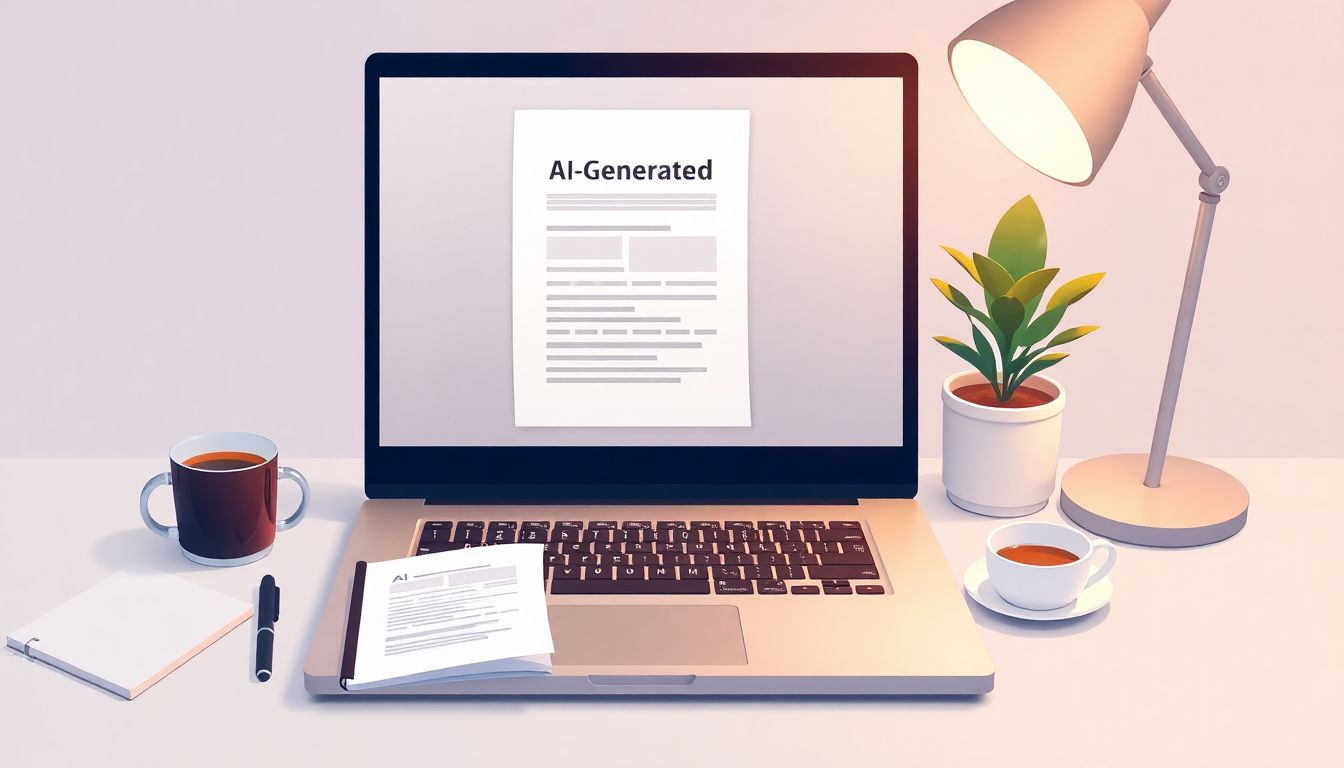Developing effective policies can feel like trying to solve a Rubik’s Cube—frustrating and complicated, right? You’re not alone in feeling overwhelmed by the process, especially when you strive for clarity and compliance. It’s a tricky balancing act that demands not just insight but also creativity.
But what if I told you that ChatGPT could be your trusty sidekick in this endeavor? Stick around, and I’ll show you how this AI tool can simplify policy development, giving you a fresh perspective and practical steps to draft documents with ease.
From step-by-step guides to real-world examples, we’ll explore everything you need to know about leveraging ChatGPT for crafting policies that are not only effective but also compliant. Let’s transform your policy writing journey together!
Key Takeaways
- Use ChatGPT to streamline policy development by starting with clear objectives and specific prompts.
- Break down policy creation into simple steps: outline key components, input detailed prompts, and review drafts.
- Experiment with tailored prompts for effective policies, adjusting them based on your organization’s needs.
- Always review generated content for clarity, compliance, and alignment with organizational values.
- Seek feedback from stakeholders and involve legal experts to ensure policies are accurate and compliant.

How to Use ChatGPT for Developing Policies
Using ChatGPT for policy development is a straightforward process that harnesses the power of AI to streamline and enhance your drafting experience.
Start by framing your objectives clearly.
Identify the specific policy you need and any guidelines or regulations that must be considered.
Once you have a clear direction, you can begin engaging with ChatGPT to generate relevant content.
Formulate your inquiry to specify what you want, such as the policy’s scope and intended audience.
For example, you could say, “Draft a workplace safety policy suitable for a small tech company.”
This targeted approach makes it easier for the AI to provide you with actionable and specific outputs.
Step-by-Step Guide to Creating Policies with ChatGPT
Creating policies with ChatGPT can be broken down into a series of simple steps.
First, outline the key components you want the policy to cover.
This could include objectives, definitions, procedures, and responsibilities.
Next, input a detailed prompt into ChatGPT based on your outline.
For example:
Generate a patient privacy policy that includes definitions, employee responsibilities, and compliance with the Health Insurance Portability and Accountability Act (HIPAA).
Review the first draft you receive for clarity and relevance.
Iterate on your prompts, refining your requests until ChatGPT produces a version you’re satisfied with.
Always make sure to consult with relevant stakeholders to ensure the policy aligns with your organization’s values and compliance standards.
Top Prompts to Generate Effective Policies with ChatGPT
To maximize your use of ChatGPT in policy formation, consider these effective prompts.
Write a comprehensive remote work policy that addresses communication, work hours, and performance expectations.Create an onboarding policy template tailored for new hires in a retail environment.Draft a non-discrimination policy that emphasizes inclusivity and respect in the workplace.Generate a social media policy for employees that outlines acceptable use and company representation.Develop a data protection policy to ensure the safeguarding of customer information.
Feel free to customize these prompts per your specific needs.
The level of detail you provide will greatly affect the responses, so don’t hesitate to experiment.
Best Practices for Writing Policies with ChatGPT
Writing policies with ChatGPT can be far more efficient if you follow a few best practices.
Firstly, always start with a detailed outline.
Clearly define what you want your policy to address and the structure you prefer, perhaps even breaking it down by sections.
Secondly, be specific with your prompts.
The more information you provide, the better the output will be.
For instance:
Draft a vacation policy that includes eligibility, accrual rates, and procedures for requesting time off.
Moreover, always review and edit the generated text for compliance and clarity.
Lastly, seek feedback from colleagues to ensure the policy is practical and meets organizational standards.

Common Challenges When Using ChatGPT for Policy Development
While ChatGPT is a powerful tool for policy development, it does come with its share of challenges.
One major issue is the risk of generating content that lacks specificity.
For instance, if you ask for a broad policy, the responses may be too generic to be practically useful.
To overcome this, be precise when asking for a policy, detailing the key components needed.
Moreover, ChatGPT sometimes struggles with nuance and context, which can lead to oversights in complex policy areas.
For example, in sensitive areas like healthcare or legal matters, the AI might not fully grasp the intricacies without thorough prompts.
It’s essential to review the generated content critically and consult experts where necessary.
Lastly, remember that ChatGPT is a machine learning model and may produce biased or inappropriate content based on its training data.
This means continuous human oversight is crucial to ensure the policies remain ethical and comply with legal standards.
Examples of Policies Created Using ChatGPT
Looking at real examples can provide inspiration and insight into how effectively ChatGPT can aid in policy development.
For instance, a company’s remote work policy generated by ChatGPT may include guidelines on communication, work hours, and equipment usage.
Another example could be a comprehensive data privacy policy outlining user rights and data protection measures.
Many organizations have successfully implemented burnout prevention policies that include mental health resources and flexible scheduling.
You can also leverage ChatGPT to draft an anti-harassment policy that promotes a safe workplace environment.
When utilizing ChatGPT, tailor the prompts to your organization’s values to align the output with your unique culture.
By assessing and adapting these AI-generated texts, you can create effective policies that serve your organization well.
Tips for Refining Policy Drafts Generated by ChatGPT
Once you have a preliminary policy draft from ChatGPT, it’s time to refine it into a polished document.
Start by reading through the draft critically to identify areas that require clarification or additional detail.
Common issues include vague language or sections that may be too broad, so pinpoint those first.
Next, reorganize sections for clarity; sometimes, rearranging content can make a world of difference in readability.
Have colleagues or stakeholders review the draft to provide feedback—fresh eyes can spot issues you might miss.
Consider using specific phrases like, “Revise the section on employee responsibilities to make it clearer,” in future prompts for ChatGPT.
As you iterate, ensure that core values and compliance standards are integrated into the final draft.
Finally, run a compliance check, especially for policies that are legally binding or sensitive in nature.
Ensuring Compliance and Accuracy in ChatGPT-Generated Policies
Ensuring compliance and accuracy is vital when using ChatGPT to develop policies.
Begin by cross-referencing the generated content with existing laws and regulations relevant to your industry.
This will help identify any discrepancies or non-compliance issues right from the start.
For instance, if creating a health policy, ensure it aligns with HIPAA regulations if applicable.
In addition, tailor prompts to request specific legal information; an effective prompt might be:
Draft an employee benefits policy that complies with the Affordable Care Act while including eligibility criteria.
Consult legal experts as needed to validate the final document before implementation.
Lastly, keep an eye on updates to regulations and standards, making adjustments to the policies as necessary to maintain compliance over time.

Real-World Use Cases of ChatGPT in Policy Development
ChatGPT is making waves in various sectors, driving policy development with its AI capabilities.
In the tech industry, companies use ChatGPT to formulate cybersecurity policies.
These policies cover user data management and risk assessment procedures.
Government agencies are also leveraging ChatGPT for policy drafting.
For example, ChatGPT has been utilized to create public health guidelines during health crises.
Educational institutions use ChatGPT to develop clear policies on academic integrity and online learning.
Non-profits have adopted ChatGPT for drafting diverse policies, from fundraising to volunteer management.
The versatility of ChatGPT caters to a wide range of needs, providing tailored outputs for different sectors.
When using ChatGPT, adapt the prompts to meet the unique requirements of your organization.
Future Trends: How AI Like ChatGPT is Shaping Policy Making
The future of policy making is undoubtedly being influenced by AI advancements like ChatGPT.
One emerging trend is the increasing demand for real-time policy adjustments.
AI can swiftly analyze data and suggest policy changes as circumstances evolve.
Moreover, integrating AI into policy development can enhance citizen engagement.
ChatGPT can provide personalized responses to public inquiries about policies.
There’s also a growing focus on data-driven policy decision-making.
With ChatGPT, you can generate reports and insights, facilitating informed choices based on real-time data.
As AI technology continues to evolve, expect even more automation in the policy formulation process.
Keep an eye on these trends to ensure your organization stays ahead of the curve in policy development.
FAQs
To effectively prompt ChatGPT for policy development, clearly define the policy topic, objectives, and any specific requirements. Using structured prompts will yield more relevant and comprehensive policy suggestions.
To ensure compliance, review the generated policies against relevant laws, regulations, and organizational standards. Consider consulting legal experts to verify adherence and make necessary adjustments based on their guidance.
Common challenges include generating vague or inaccurate content, lack of specific legal knowledge, and ensuring contextual relevance. Users may need to refine outputs iteratively for clarity and compliance.
Examples include employee conduct policies, remote work guidelines, and compliance procedures. Each example typically incorporates organizational goals and best practices, showcasing ChatGPT’s versatility in policy development.
